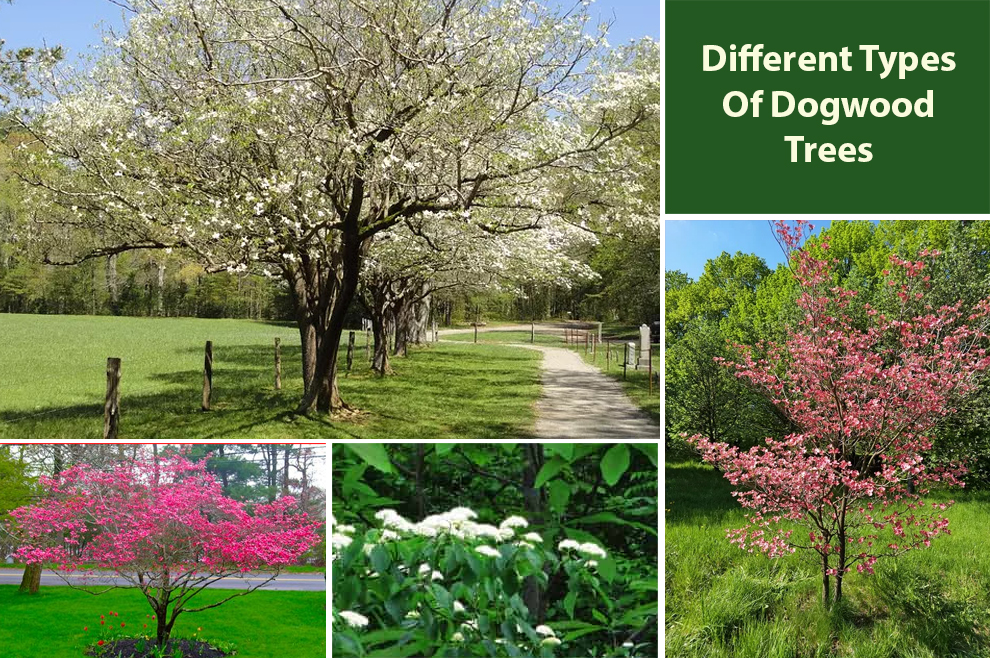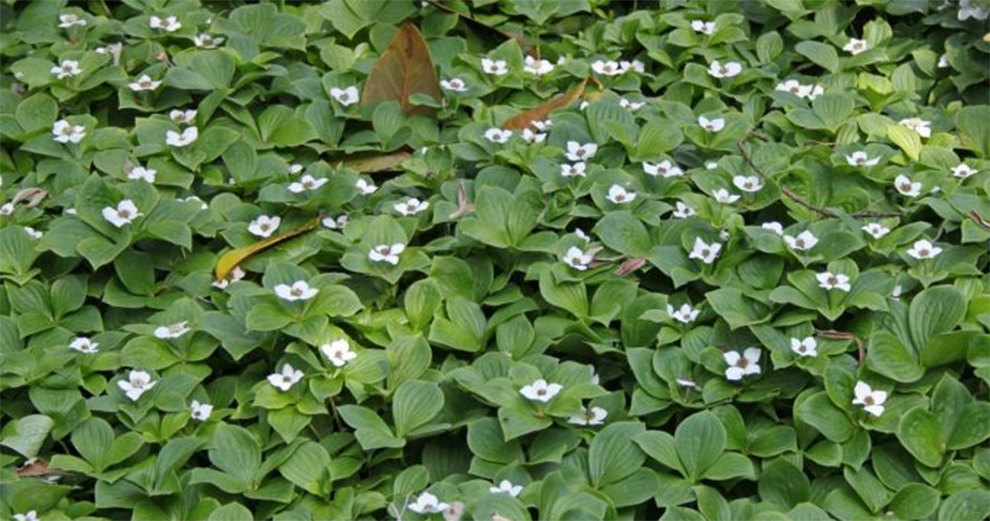Dogwood Tree Varieties From Different Kinds of Species
Among the different types of dogwoods, the most common ones are the flowering dogwood, kousa dogwood, red dogwood and white. Altogether there must be around 60 varieties of dogwood trees.

Dogwood trees, with a vast selection of approximately fifty to sixty species, are mainly found in the Northern Hemisphere’s temperate regions.
These resilient flowering plants, known for their vibrant displays, thrive in different locations sans demanding excessive care. With their handy nature, different types of dogwood trees adapt to different environments, making them a versatile inclusion in the landscape.
These small trees or deciduous shrubs bring charm and beauty to the gardens and offer a welcoming habitat for birds and other wildlife.
With 50-60 varieties, from Pacific Dogwood to White Dogwood and Creeping Dogwood, you can find many kinds of dogwood trees in this family, offering an exciting collection of species to enjoy and explore.
Dogwood Tree Identification
| Botanical name | Cornus spp. |
| Height & spread | In Full Sun – 15 to 20 feet
In shade – Up to 40 feet |
| Leaf | Exhibit smooth edges and veins that gracefully follow the curvature of the margins, and some may have an alternate leaf arrangement on the stems. |
| Flower | May or may not have large bracts |
| Bark | Scaly (older trees have patched bark that peels) |
| Fruit | They yield fruit after pollination. It is called a drupe. |
Different Types of Dogwood Trees
- Flowering Dogwood Tree
- Kousa Dogwood Tree
- Creeping Dogwood Tree
- Cornelian Dogwood Tree
- White Dogwood Tree
- Pacific Dogwood Tree
- Rough Leaf Dogwood
- Pagoda Dogwood Tree
- Red Osier Dogwood Tree
- The Lesser Known Dogwoods
- Dwarf Dogwood Trees
Dogwood trees are known for their superior ornamental value and spectacular blooms. But there are many varieties of dogwood trees available, each with its distinct beauty and characteristics, making them a versatile inclusion for landscape design.
You may first choose the right variety of dogwood for your yard and then learn dogwood tree care for greenery all around.
A. Flowering Dogwood Tree
| Native area | Eastern United States |
| Height | Typically 15-30 feet (4.5-9 meters) |
| Sun requirement | Partial shade to full sun |
Botanically called the Cornus Florida, Flowering Dogwood is one of the most iconic and beloved dogwood tree species. They are known for their exquisite beauty.
Cornus Florida’s deciduous tree has show-stopping red, pink, or white blooms, depending on the cultivator. The flowers comprise four delicate pearls, creating a breathtaking spectacle in the early spring.
Beyond its striking floral display, the Cornus Florida has attractive foliage that transitions to appealing red or purple shades in the fall.
Its spreading habit and compact size make it suitable for gardens, whereas its ability to thrive in partial shade amplifies its versatility. It is a cherished pick for adding charm and elegance to any landscape.
B. Kousa Dogwood Tree
| Native area | East Asia |
| Height | Typically, 15-25 feet (4.5-7.6 meters) |
| Sun requirement | Full sun to partial shade |
One of the captivating dogwood tree varieties, the Kousa is known for its exceptional beauty. It offers a unique twist to the traditional dogwood.
The Kousa Dogwood features stunning pink or white flowers that bloom later in spring, followed by attractive strawberry-like flowers.
It is admired for its vibrant colors, elegant shape, and ability to endure a vaster range of soil conditions compared to other species.
C. Creeping Dogwood Tree

| Native area | North America |
| Height | 4-8 inches (10-20 centimeters) |
| Sun requirement | Partial shade to full shade |
Also called the Bunchberry, the Cornus canadensis or Creeping Dogwood are charming and unique groundcover types of dogwood trees. These species form a dense green foliage carpet and thrive in moist, acidic soils and shaded woodland regions.
Its most distinctive attribute is its small white flower clusters that show in late spring, followed by attractive red berries.
The plant has vibrant red foliage in the fall, which adds a splash of color to the garden. This resilient yet diminutive dogwood adds interest and beauty to shaded gardens and naturalistic settings.
D. Cornelian Dogwood Tree
| Native area | Europe and parts of Asia |
| Height | 15-25 feet (4.5-7.6 meters) |
| Sun requirement | Full sun to partial shade |
The Cornelian Dogwood or the Cornus mas is a delightful deciduous tree known for its early vibrant fruiting and spring flowering. These dogwood trees are a favorite addition to the landscape and feature a multi-stemmed, spreading habit.
In the early spring or late winter, it blooms with clusters of yellow, small flowers that brighten the surroundings.
As the summer progresses, these blossoms give way to edible bright red berries, attractive birds, and adding a pop of color. The Cornelian Dogwood is a remarkable ornamental tree choice with its colorful fruits, eye-catching flowers, and beautiful form.
E. White Dogwood Tree
| Native area | Eastern parts of North America |
| Height | 20-30 feet (6-9 meters) |
| Sun requirement | Partial shade to full sun |
White Dogwood is an eye-catching flowering tree highly regarded for its appealing white blossoms that appear in early spring, forming a breathtaking spectacle.
These deciduous dogwood tree varieties have a rounded shape with horizontal branching. They thrive in well-drained soils.
Beyond beautiful flowers, it is liked for its beautiful green foliage during the summer that transitions to shades of burgundy in the fall. The White Dogwood is famous for adding elegance and a touch of serenity to any landscape or garden.
F. Pacific Dogwood Tree
| Native area | Pacific Northwest region of North America |
| Height | Up to 60 feet (18 meters) |
| Sun requirement | Partial shade |
Cornus nuttallii, or Pacific Dogwood, is known for its show-stopping beauty and is an iconic and magnificent tree. It is the official flower of the Canadian province of British Columbia. The tree boasts creamy, white flowers that bloom in late spring, creating a breathtaking display.
It has dark green, glossy leaves that offer an attractive backdrop for the flowers. This specie thrives in well-drained soil. With its striking floral showcase and majestic presence, the Pacific Dogwood adds elegance and grace to the landscapes and woodland gardens.
G. Rough Leaf Dogwood
| Native area | North America |
| Height | 10-20 feet (3-6 meters) |
| Sun requirement | Partial shade to full sun |
Cornus drummondii, Drummond’s Dogwood, or Roughleaf Dogwood, is an attractive and resilient shrub or a small tree that thrives in different habitats, including stream banks, prairies, and woodlands.
These types of dogwood trees feature ovate, rough-textured leaves that give it its distinctive name. In early summer, it produces clusters of creamy-white flowers, followed by small blue-black berries that attract birds.
With its intriguing bark and dense foliage, which is scaly and gray-brown, the Roughleaf Dogwood adds visual interest and texture to the landscapes, making it a valuable choice for wildlife gardens and native plantings.
H. Pagoda Dogwood Tree
| Native area | Eastern North America |
| Height | 15-25 feet (4.5-7.6 meters) |
| Sun requirement | Partial shade |
Pagoda dogwood or Cornus alternifolia is a striking small tree known for its distinctive layered branching pattern that resembles the tiered structure of a pagoda, hence its name.
These kinds of dogwood trees have an architectural and elegant presence in the landscape. In spring, they yield creamy-white flower clusters followed by blue-black berries that attract birds.
Its leaves depict an attractive deep green color, turning shades of red and purple in the fall. They thrive in well-drained soil and partial shade, making it a captivating selection for naturalistic settings and gardens.
I. Red Osier Dogwood Tree
| Native area | North America |
| Height | 6-9 feet (1.8-2.7 meters) |
| Sun requirement | Full sun to partial shade |
Also called the Red Twig Dogwood, the Red Osier Dogwood is a deciduous, vibrant shrub prized for its striking red stems that offer a bold splash of color, especially during the winters when the leaves fall.
These dogwood tree varieties spread to develop thickets. In the spring, they yield small white colored-flower clusters, followed by white berries that the birds love.
A hardy shrub, Red Twig Dogwood helps in erosion control, ornamental landscaping, and wildlife habitat because of its stunning winter appeal and attractive foliage in the other seasons.
The Lesser Known Dogwood Tree Species
Here are some other species you must know of:
- Cornus capitata (Himalayan Dogwood)
- Cornus alba (Tatarian Dogwood)
- Cornus sanguinea (Common Dogwood)
- Cornus acemose (Gray Dogwood)
- Cornus controversa (Giant Dogwood)
- Cornus mas (Cornelian Cherry Dogwood)
- Cornus foemina (Stiff Dogwood)
- Cornus rugosa (Round-Leaved Dogwood)
- Cornus hongkongensis (Hong Kong Dogwood)
Dwarf Dogwood Tree Varieties
These are smaller and compact versions of their larger counterparts, making them suitable for containers, smaller gardens, or areas with limited space.
Despite their small size, the Dwarf Dogwood still offer the same charm, beauty, and ornamental value as their larger counterparts. These typically have attractive bark, unique foliage colors, and appealing flowers.
They are easy to maintain and are best suited for landscaping purposes. Some popular dwarf dogwood varieties include:
- Cornus canadensis (Bunchberry)
- Cornus sericea ‘Kelseyi’ (Dwarf Red Osier Dogwood)
- Cornus kousa ‘Little Poncho’ (Dwarf Kousa Dogwood)
- Cornus florida ‘Poinsett’ (Dwarf Flowering Dogwood)
- Cornus nuttallii ‘Goldspot’ (Dwarf Pacific Dogwood)
They are an excellent alternative for home growers seeking a perfect solution to enjoy the beauty of dogwood in a smaller space.
You might also be interested in knowing the growth rate of different varieties of dogwood like Kousa Dogwood, Pink Dogwood, and White Dogwood.
What Is The Most Common Dogwood Tree?
Flowering Dogwoods, or the Cornus Florida, are the most common types of dogwood trees. They are planted for their iconic white or pink flowers and attractive foliage.
Which Dogwood Tree Is Best For The Yard?
The best dogwood tree for your yard depends on personal preferences, size requirements, and climate. However, the popular choices include:
- Kousa Dogwood (Cornus kousa)
- Flowering Dogwood
- Cornelian Cherry Dogwood
- Pacific Dogwood
